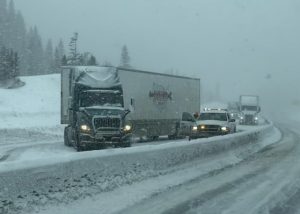Thompson: Ken Burns’ ‘Vietnam War’ documentary hauntingly accurate (column)
Valley Voices

Ken Burns’ film about the Vietnam War that is currently playing on PBS stations across the country is truly extraordinary. It is extraordinary because it attempts to describe, explain and justify everyone’s point of view. It describes Ho Chi Minh’s beliefs, efforts and behavior from 1919 in Paris until his death in 1969. It describes and justifies the behavior of presidents Truman, Eisenhower, Kennedy and Johnson. Why did they turn away the nationalistic efforts of this insignificant peasant country? And then President Nixon.
But most extraordinary is the film’s presentation of the thinking, the strategies, the disappointments and the results of the main combatants in that war. First it was the French and the Viet Minh. Then it evolved into the North Vietnamese, the South Vietnamese, the Viet Cong and the Americans. I was one of those Americans.
My name is Peter Thompson. I served as a Special Forces Advisor to the Army of the Republic of South Vietnam. I trained at the JFK Special Warfare School at Fort Bragg, the Vietnamese Language School at Fort Bliss and other military posts. In 1968, at 20 years of age, I was sent to Vietnam as a “military advisor” to soldiers who had already been fighting for three decades.
I lived with a Vietnamese maneuver battalion, ate rice and “nuoc mam,” wore their uniform and participated in the war: helicopter assaults, firefights, friendly-fire accidents, pilot rescue, POW interrogations and a host of “hearts-and-minds” efforts. Despite my experiences and survival, I was always the foreign rookie. I remember at one time, my Vietnamese counterpart said: “We have been fighting this war forever, and we will be fighting it when you leave.”
That was 50 years ago, and today, watching Ken Burns’ version of “The Vietnam War,” I am haunted by how accurate his film is in presenting exactly how I felt, reacted and suffered, before, during and after.

Support Local Journalism
• Before entering the Army, I remember feeling that communists were evil; that military service was honorable; that Vietnam was a war against communism; that I wanted to get out of school and do something real and grown-up. All of these sentiments are presented in the film, and as they are presented, I could feel the memories stir in me.
• As a soldier in Vietnam, I remember the uniforms, the combat gear, the rice fields, the smells, the unclear loyalties, the radio squawk, the helicopters. These and much more are also presented in the film, and as they were presented, I remembered my hidden feelings, my questions, my fears, my loss of youth, my loss of innocence. Were we on the right side? Were we the foreigners?
• When I came home to America, I was full of misgivings. I remember the demonstrations; I remember another president promising to end this endless war … all very much like Ken Burns presents it.
To me, the most fascinating aspect of Burns’ film is this: If it is that accurate in representing what I experienced, in representing the American side, then it is probably accurate in representing the other sides: the Viet Cong guerilla, the North Vietnamese regular, the lady truck drivers, the journalists, the displaced rural peasants, the political egomaniacs.
And although it was 50 years ago, it is amazing how even tempered the VC, ARVN and NVA witnesses are in Burns’ film. There is no moralizing, no bogus or self-abasing claims of victim status, no resentments, no grievances. They just tell their story. In life-or-death struggles, is it fair to listen to the other side’s story? Are we doing that now?
So, I have one more story. As my tour in Vietnam ended, I received orders to report to the Saigon airport to fly home. It was September 1969. I had been working with an infantry company of the 18th ARVN division located about 124 miles from Saigon. I said goodbye to my hardy Vietnamese ground-pounders and went over to the nearest American compound, where I asked the commander for transportation to the Saigon airport.
There was a helicopter delivering mail, and yes, they offered me a ride to Saigon. The Huey took off with its familiar whoop-whoop-whoop sound, and I was heading home … I was heading home. The crew chief handed me a pair of headphones, and there was music playing. As I watched out the open helicopter, as my combat tour was ending, I heard The Beatles singing, “It’s been a hard day’s night.”
Peter Thompson resides in Vail, teaches skiing, occasionally teaches finance at Colorado Mountain College and is vice-commander of the local VFW.










